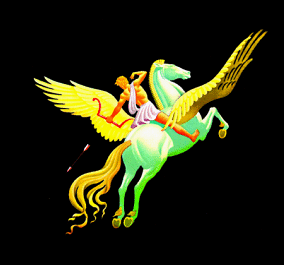not necessarily untruth
In Lecture 1 we looked at mythology and science--two different stories that attempt to make sense of life, the universe, and everything.
Without belaboring the point, I want to quickly restate something that I'm sure will raise objections: mythology is not necessarily untruth (at least not entirely untrue); science is not necessarily truth (at least not the entire truth).
I am not anti-science; in fact, I was a math/science major up through the middle of my college career; I'm especially fond of physics. Still, I certainly do not blindly accept scientific fact as absolute. In a book called How Nature Works Per Bak noted the lack of open-mindedness that is sometimes found in the scientific community:
I once raised this issue among a group, not of geophysicists, but of cosmologists at a high table dinner at the Churchill College in Cambridge. "Why is it that you guys are so conservative in your views, in the face of the almost complete lack of understanding of what is going on in your field?" I asked. The answer was as simple as it was surprising. "If we don't accept some common picture of the universe, however unsupported by the facts, there would be nothing to bind us together as a scientific community. Since it is unlikely that any picture that we use will be falsified in our lifetime, one theory is as good as any other." The explanation was social, not scientific. (86)
I doubt all scientists would agree with the above statement, but science is really about creating models based on observations. The model is valid until someone finds a model that more accurately fits new observations; hence, the heliocentric notion of our system which got Gallileo into so much hot water eventually HAD to replace the geocentric model. By the way, a quick read of Ovid's creation myth shows that the ancient Greeks and Romans already knew a great deal about what scientists now teach; much of that knowledge was lost or suppressed in the dark and middle ages.
Mythology--systems of belief not supportable by the scientific method--is a blend of primative science (observation), exaggeration, legend, imagination, symbol presented in the form of stories. The stories are attempts to make sense of the unknown. Why, for example, do some flowers have heart-shaped centers? What accounts for all of the eye designs on the tail of the peacock (again, read Ovid for an answer). If a world is designed by a benevolant creator, what accounts for cruelty, pain, suffering, hunger, labor (both kinds), murder? Why do people speak different languages? What is the meaning of a rainbow?
Some of the answers can now be explained with tools (light refraction); others really can not (suffering).
In any case, the myth makers used the known (fire, a chariot) and applied them to the unknown (sun crossing the sky) to try to make sense out of their world, to create order and security from chaos and fear. And these stories passed from generation to generation, place to place, changing with the storytellers and with new conditions and new discoveries.
What's amazing is that with all of the differences, there are consistent patterns in most myth systems. Suffering, for example, comes about when people tamper with things reserved for God or gods or goddesses (knowledge of good and evil in the Adam and Eve story, acquisition of fire by Prometheus which leads to the temptation of Pandora, trusting the dog to protect creation in the Ulgen the Creator, building a tower that reaches toward heaven in The Tower of Babel).
This is a good spot to look at the objection raised against the treatment of women in myths / religions. Eve gets the blame! Pandora gets the blame! Some man wrote that to make women look bad.
Possibly.
The stories many of us are most familiar with do have women being tempted. There are other myths (like Ulgen) where men or lesser animals are weak. In nearly each case it's a temptor, not the tempted, who is the villain. And Adam and Epimetheus don't come off looking brilliant in their two stories.
Nevertheless, myths do offer us a lens through which we can view cultures--their beliefs, their likes and dislikes, their values. The can also be used to shape values (a woman did it!). But that is subject to interpretation.
There is another way of viewing and interpreting the myths (more of this will be explored in Lecture 3). The myths really do parallel human experience; the ancient and supernatural characters are larger than life, but the patterns of existence mirror our own.
The expulsion from an Edenic existence (of a cozy place where everything is supplied, where all needs are met for us) is something we all experience. We go from the womb (literally, then being nurtured, cleaned, protected through infancy). Eventually, we get a sense of independence--call it a will if you wish. We make decisions for ourselves (some better than others!); we have our own tastes (some more costly than others). We get to drive around in a car, but with a price. We pay insurance, deal with needed repairs, are responsible for traffic violations. So mom gave us life and nurtured us, but once we finished college and held down a job and found our own families we had to leave. Is the Eve / Pandora story resentment at HAVING to grow up?
It's a different way of approaching myths, but it is consistent with the purpose of these earliest stories--to make the life, the universe, and everything make sense to people, to put the unknown things in the world in a context that fits the known things.
You are welcome to take myths literally. They don't have as much connection with our lives and the lives of the storytellers, but you are, after all, independent :)

![[schedule]](butsked.gif)
![[discussion questions]](butdisc.gif)
![[writing assignments]](butpaper.gif)
![[readings]](butread.gif)
![[home]](buthome.gif)